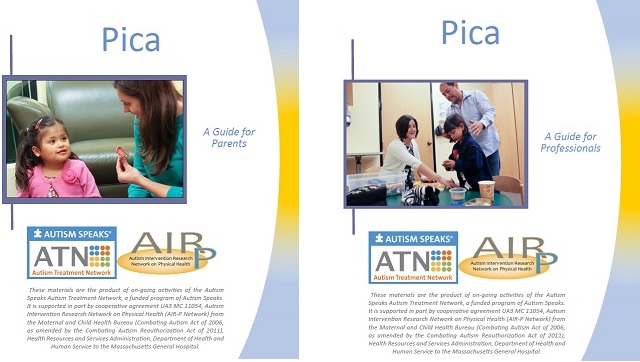is putting things in mouth a sign of autism
The tongue is almost ready-made for exploration with more sweet receptors on the tip to guide the mouth toward high calorie and readily energizing sweets. Though many times oral stimming can be a good thing sometimes it can cause a problem.

Autism Dilemma Chewing Swallowing Objects Autism Speaks
1 Most people stim in subtle ways.

. The chemical receptors in the babys nose serve to. It differs from typical stimming in the type quantity and obviousness of the behavior. Both are very common among people who have autism.
The heavy input given by chewing on things helps to calm our overstimulated nervous system. Playful oral-sensitivity exercises can include blowing bubbles. When Oral Stimming causes an issue.
Recent research is changing the way that medical professionals are viewing ASD. It can be a worry when young children put everything they shouldnt into their mouths. Similarly therapists have a variety of tactile exercises that can help your child develop sensitivity in the lips tongue mouth and chin.
Tapping your pencil biting your nails and twirling your hair are all examples of stimming. Tia often puts objects in her mouth such as food toys or sticks and leaves. Many kids with autism exhibit Pica behavior which means they mouth chew on or ingest things that arent edible.
1 Autistic stimming is usually more extreme. It can also be a comforting habit. Think carrots apples pretzels etc.
Putting hands body parts or objects in their mouth. This child is hyposensitive to oral stimulation. In other words these behaviors feel good.
This is a common behavior among kids with SPD andor autism and there are many ways to address it. The mouth has many sensory receptors. Stimming doesnt always indicate autism.
When properly directed it can be a great resource. A child who makes no effort to connect with others might be at risk for autism. It is often the most obvious symptom.
Try crunchychewy foods during meal and snack times. This is one of the most common early warning signs of autism. Many children with autism demonstrate difficulties processing sensory information.
Check out now the facts you probably did not know about. Autism affects about two out of every 1000 children in the US and symptoms usually develop before age three. This is a common behavior among kids with SPD andor autism and there are many ways to address it.
The traditional held view that autism is a mental health issues is being challenged by new information about alterations in biochemistry and physiology in children with autism. This can be extremely dangerous as kids often eat or mouth things that are either unsanitary unhealthy in some way or even objects that are sharp that could potentially lead to internal injuries. Chewing is also seen in children with autism and sensory issues.
By age one or two if. Its normal for kids up to 2 years old to put things in their mouth. The information from these receptors is sent to the brain which organizes and processes the.
These behaviors help them take control of their uncontrolled sensory responses. Harder to chew foods can help give the input a child is looking for. Im glad to share some of my insights as an occupational therapist who frequently works with families whose children have this dangerous tendency.
Just like sniffing mouthing and licking might be another way for an ASD child to explore the world around them. Avoiding touching paint gooey food or glue or interpreting the touch of a hair. She suggests giving your son a vibrating.
Should I Stop My Child Stimming. It may feel as if he cannot satisfy the need causing him to continuously have something in his mouth. While chewing on a piece of gum may satisfy a need to chew with someone who doesnt have autism it is not enough for many who have autism.
Chewing on things can be a form of repetitive behavior. Poor Eye Contact istockphoto Even kids as young as two months should be making eye contact. Ad Learn more about the signs that may reveal you have an Issue that need attention.
Can I just say that this can just be normal child hood behaviour my 5 year old was an absolute nightmare for putting anything and everything into her mouth when she was 2-3 but yet shes the NT out of my 3 daughters. For taste texture temperature wetness and dryness movement in the jaw and in the tongue for instance and so on. Bitter receptors are located at the back of the tongue to give warning not to swallow and to expel dangerous or poisonous substances.
Some children with autism and oral fixation wind up chewing on items that are not safe. Putting items into his mouth playing with his saliva and walking on his toes most likely gives him sensory input. Hi sorry to hear about this.
The habit of swallowing non-food items is called pica. The chemical receptors in the babys nose serve to. Children on the autism spectrum often use mouthing the same way they use hand flapping finger twisting rocking and other forms of sensory self-regulation.
This includes building awareness of dryness versus wetness so your child becomes aware when hes drooling. Understanding all the signs of autism will help you determine if your child needs professional help or just a time out to help them remember their table manners. Sandy Horna Physical Therapist explains that your son is most likely mouthing items because he is seeking sensation that his central nervous system is not providing to his mouth.
We share three things you can do to keep this behaviour under control as well as two play activities that can help your child with their behaviour. Stimming is a frequent symptom of autism. When properly directed it can be a great resource.
The term tactile defensive refers to one symptom of sensory integration dysfunction in which the person finds touch aversive 2Signs of tactile defensiveness may include. Smelling or licking objects. About 70 of autistic people have some degree of.
Other repetitive behaviors include hitting oneself humming not humming a tune but humming for the sake of making noise making clicking noises snapping clapping inappropriately pacing or making other repetitive motions. Foods that are crunchy or chewy can be really great options for snacks and lunch.

Pecs 8 Pecs Communication Pecs Pictures Pecs Autism

Sensory Processing Sensory Seeker Sensory Integration Disorder

Autism Chew Toys Guidance On Sensory Chew Toys Pingree Center

This Is Why I Boycottautismspeaks Image Is A Hi Comics Autism Speaks Autism Autism Acceptance

Pin By Delia Blenner Hassett On Autism Food Texture Sensory Seeker Bland Food

What Is Stimming In 2021 Autism Facts Understanding Autism Autism Information

New Autism Stims Mouth Eyes Fingers Youtube

What Goes In My Mouth Social Narrative Social Stories Social Stories Autism Social Narratives

Putting Things In My Mouth Social Story In 2022 Social Stories Teaching Speech Therapy

Is Tongue Thrust A Sign Of Autism Santa Cruz Scotts Valley Ca

Ready To Press Sublimation Transfer Peace Love Autism Rainbow By Thepeanutscreations On Etsy Peace And Love Sticker Art Senior Shirts

Why Does My Older Child Chew On Everything Anxiety In Children Childhood Behavior Sensory Therapy

Social Narrative Is Okay Or Not Okay To Put In Mouth For Special Education Social Stories Autism Social Stories Social Skills Activities

Mouthing Objects Association For Science In Autism Treatment

Autism Awareness Autism Quotes Understanding Autism Autism

People With Autism Have A Different Way Of Looking At The World Autism Quotes Autism Awareness Quotes Autism Education

The Ultimate List Of Sensory Toys For Autistic Children On The Planet Toys For Autistic Children Kids Sensory Sensory Toys

Sensory Processing In Children With Autism Licking Behavior

Toddler Sign Language Chart Sign Language Can Help Many Children Learn To Talk Commun Sign Language For Kids Sign Language Phrases Sign Language For Toddlers